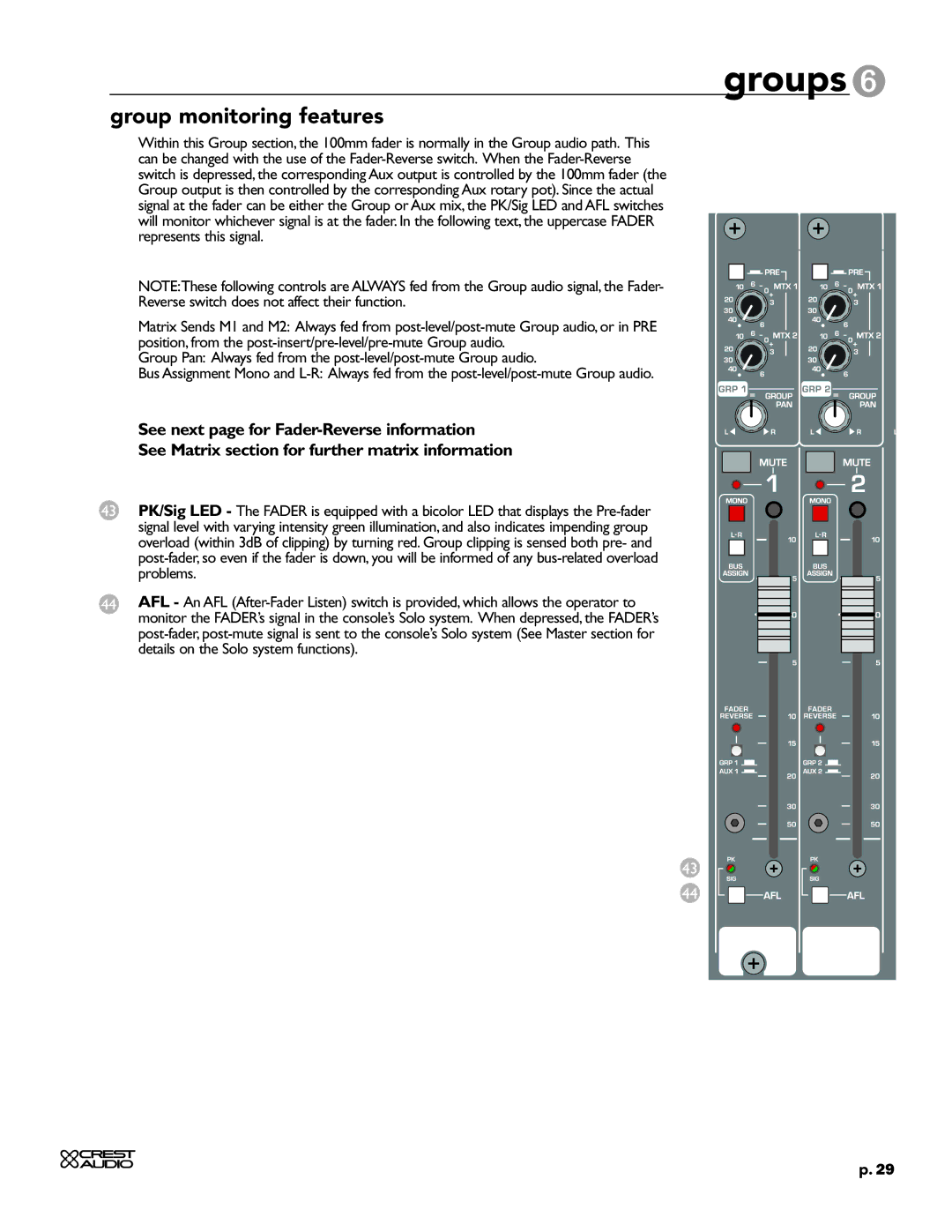groups 6
group monitoring features
Within this Group section, the 100mm fader is normally in the Group audio path. This can be changed with the use of the Fader-Reverse switch. When the Fader-Reverse switch is depressed, the corresponding Aux output is controlled by the 100mm fader (the Group output is then controlled by the corresponding Aux rotary pot). Since the actual signal at the fader can be either the Group or Aux mix, the PK/Sig LED and AFL switches will monitor whichever signal is at the fader. In the following text, the uppercase FADER represents this signal.
NOTE:These following controls are ALWAYS fed from the Group audio signal, the Fader- Reverse switch does not affect their function.
Matrix Sends M1 and M2: Always fed from post-level/post-mute Group audio, or in PRE position, from the post-insert/pre-level/pre-mute Group audio.
Group Pan: Always fed from the post-level/post-mute Group audio.
Bus Assignment Mono and L-R: Always fed from the post-level/post-mute Group audio.
See next page for Fader-Reverse information
See Matrix section for further matrix information
43 PK/Sig LED - The FADER is equipped with a bicolor LED that displays the Pre-fader signal level with varying intensity green illumination, and also indicates impending group overload (within 3dB of clipping) by turning red. Group clipping is sensed both pre- and post-fader, so even if the fader is down, you will be informed of any bus-related overload problems.
44 | AFL - An AFL (After-Fader Listen) switch is provided, which allows the operator to |
| monitor the FADER’s signal in the console’s Solo system. When depressed, the FADER’s |
post-fader, post-mute signal is sent to the console’s Solo system (See Master section for details on the Solo system functions).
43
44

